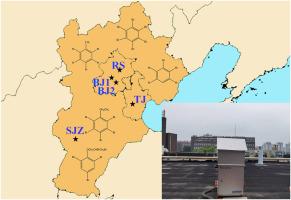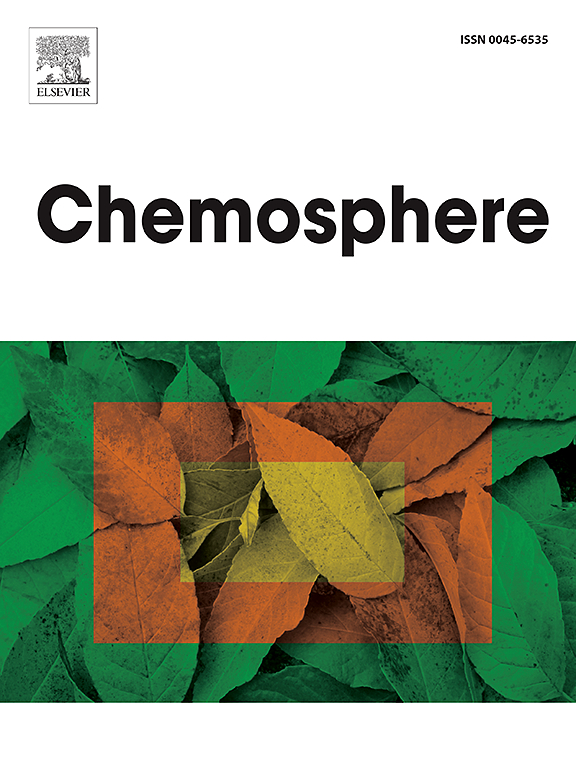中国京津冀地区大气中新型溴化阻燃剂的时空分布。
IF 8.1
2区 环境科学与生态学
Q1 ENVIRONMENTAL SCIENCES
引用次数: 0
摘要
研究了京津冀(BTH)地区五个采样点全年大气中新型溴化阻燃剂(NBFRs)的发生和时空分布情况。通过使用大风量主动空气采样器(HV-AAS)采集样品(气体和颗粒物),分析了 9 种新型溴化阻燃剂,其总浓度范围为 1.65 至 344 pg/m3,其中石家庄市城区采样点的浓度值最高。十溴二苯基乙烷(DBDPE)是最主要的同系物,平均占∑9NBFR 的 60%,而在农村采样点,其占∑9NBFR 的 90%,且明显高于城市采样点(单因素方差分析,p<0.05)。本文章由计算机程序翻译,如有差异,请以英文原文为准。

Temporal and spatial distribution of novel brominated flame retardants in atmosphere of the Beijing-Tianjin-Hebei region, China
The occurrence and spatio-temporal distribution of atmospheric novel brominated flame retardants (NBFRs) were studied across five sampling sites in the Beijing-Tianjin-Hebei (BTH) region over a whole year. By collecting samples (gas and particle) with a high-volume active air sampler (HV-AAS), nine NBFRs were analyzed and the sum concentrations ranged from 1.65 to 344 pg/m3, with the highest value found in the urban sampling site in Shijiazhuang City. Decabromodiphenylethane (DBDPE) was the predominant congener, which accounted for 60% of ∑9NBFRs on average, while it was 90% of ∑9NBFRs in the rural site and significantly higher than those observed in the urban sites (one-way ANOVA, p < 0.05). The levels of particle-bound NBFRs were significantly correlated with the variation of total suspended particulates (TSP) and temperature (p < 0.01), indicating their evident impact on the spatio-temporal distribution of NBFRs. Moreover, a significantly positive correlation was observed between the concentrations of 2-ethylhexyl-2,3,4,5-tetrabromobenzoate (EH-TBB) and bis (2-ethyl-1-hexyl) tetrabromophthalate (BEH-TEBP) (p < 0.01). Monocyclic brominated flame retardants (including PBBz, PBT, PBEB, HBB and TBP-DBPE) were correlated with each other (p < 0.01) in both gas and particle phase, suggesting their co-occurrence and the similar source in the environment. The gas-particle partitioning behavior was well predicted by the Li-Jia Empirical Model, and the results indicated that the target NBFRs did not reach the equilibrium state in air. This is one of very few studies revealed the spatio-temporal distribution of atmospheric NBFRs in the BTH region.
求助全文
通过发布文献求助,成功后即可免费获取论文全文。
去求助
来源期刊

Chemosphere
环境科学-环境科学
CiteScore
15.80
自引率
8.00%
发文量
4975
审稿时长
3.4 months
期刊介绍:
Chemosphere, being an international multidisciplinary journal, is dedicated to publishing original communications and review articles on chemicals in the environment. The scope covers a wide range of topics, including the identification, quantification, behavior, fate, toxicology, treatment, and remediation of chemicals in the bio-, hydro-, litho-, and atmosphere, ensuring the broad dissemination of research in this field.
 求助内容:
求助内容: 应助结果提醒方式:
应助结果提醒方式:


